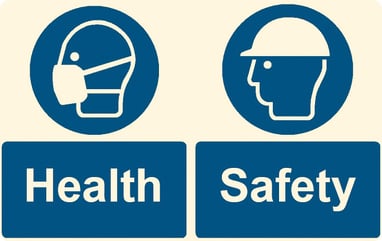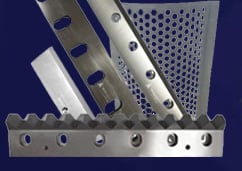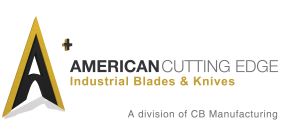With 2020 now receding in the rear view mirror and vaccinations growing in availability with the promise of things returning to “normal”, manufacturers and society as a whole have ample reasons for optimism. According to the National Association of Manufacturers (NAM), manufacturers’ confidence has risen from 34% a year ago at the onset of the pandemic to 88% heading into Q2 of 2021 marking the highest level of confidence in two years.
While indicators appear we’re headed in a positive direction, it’s critical to remember that we’re not in the clear yet. With COVID-19 surges and spikes still having a global impact and vaccinations still in the rolling out stage, disruptions are still a threat. Whether the impact results in supply chain disruptions, associate attendance challenges due to quarantine, or revenues lagging, the fact is that we’re still vulnerable to the pandemic on multiple fronts. In reviewing the many trends anticipated in the manufacturing industry over the course of 2021, there are three that stand out as factors which could truly impact industrial businesses as we strive for a return to normalcy.
Employee Safety as the #1 Priority
It’s always been important to keep employees safe. No one could ever deny that priority. In the pandemic and post-pandemic economy, employee safety has taken on a much greater significance. The need for employee welfare has extended beyond the traditional OSHA requirements and regulations that guard us from physical harm and industrial accidents to include CDC guidelines.
from physical harm and industrial accidents to include CDC guidelines.
“At American Cutting Edge, safety has always been our top priority regardless of where someone works within the organization. With the introduction of COVID, we reevaluated our processes and launched a new safety program designed not only to keep employees safe but also to mitigate the risk of transferring COVID to vendors and customers,” explains Chief Operating Officer, Gregory Billhardt.
“Early last spring we determined that the most immediate path for protecting our employees was to limit contact and implement social distancing. With personnel in manufacturing, operations, and sales, we evaluated which roles would be able to function remotely and moved those employees to a work from home status. For those remaining on-site, strict sanitization procedures were put into place that included hand sanitizing stations, face mask requirements, social distancing, cleaning tools between uses, and making sure that the rules were followed not only by ACE employees but also vendors and customers visiting the facility,” continued Billhardt.
As 2021 progresses and vaccination efforts continue, many companies are looking at their office staffing.jpg?width=344&name=collage(4).jpg) through a different lens. Virtual meetings with customers and between departments has become the norm in many organizations with machine operators staying socially distanced but productive and operations staff coming into the office on a regular or rotating basis to limit exposure. “Our organization has risen to the challenge by keeping productivity up, shipments flowing, and the work environment safer as a result. With many schools going to a virtual learning model, we found that what we thought might be a difficult work arrangement actually became a win-win. Associates were able to be home with their families as they navigated any uncertainty the pandemic brought in their day-to-day lives including helping their children with virtual learning,” shared Billhardt.
through a different lens. Virtual meetings with customers and between departments has become the norm in many organizations with machine operators staying socially distanced but productive and operations staff coming into the office on a regular or rotating basis to limit exposure. “Our organization has risen to the challenge by keeping productivity up, shipments flowing, and the work environment safer as a result. With many schools going to a virtual learning model, we found that what we thought might be a difficult work arrangement actually became a win-win. Associates were able to be home with their families as they navigated any uncertainty the pandemic brought in their day-to-day lives including helping their children with virtual learning,” shared Billhardt.
“Our need to stay socially distanced, keep up on the office sterilization efforts, and work together to stay safe isn’t going to change in the near term. At this point, our goal is to bring our teams back into the office in rotating shifts once vaccines are more widely adopted. The last thing we want to see is a surge that would endanger anyone’s health and well-being. Our decision is and will remain to be vigilant to keep employees, vendors, and customers safe,” concluded Billhardt.
Connected Work Environment
The idea of a connected work environment focuses on all employees in all locations being tied into and working from the same technological platform. Being connected to the same technologies and working together using the same procedures and polices when conducting business with customers means there’s less opportunity for errors, which positively impacts the customer experience.
According to a recent McKinley article, digital collaboration tools are poised to play an incredibly important role in enabling workers to tap into the collective knowledge and experience of the organization, effectively solve problems with experts remotely. Naturally, the ability to do these things translates to the effective use of internal resources to work more effectively both internally with each other and externally with customers.
“At ACE, our mission is to make cutting effortless for our customers. In order to achieve this with a hybrid, in-office/remote team, we had to ensure that our workforce was tied into the resources they need on a daily basis and that everyone was able to follow the same processes and procedures regardless of physical location,” explains Gregory Billhardt. “When you’re working with some folks remotely, there’s no opportunity to swing by someone’s desk and ask a question about how a detail is communicated if it’s out of the norm. With fewer employees on-site, it’s paramount that everyone is on the same page when it comes to documenting and communicating critical business information,” concludes Billhardt.
Resiliency of the Supply Chain
With more than 80% of businesses worldwide indicating that the pandemic impacted their supply chain negatively, it’s no surprise that finding a way to build resiliency within the supply chain is a priority for 2021 and beyond. Supply chain resiliency is the supply chain’s ability to be prepared for unexpected risk events, responding and recovering quickly to unanticipated disruptions to return to normal service levels. Supply chain resiliency can also refer to the growth of the supply chain to a new and more desirable state to improve customer service, market share, and financial position.
There are a number of ways to build supply chain resilience. Two standout for manufacturers:
- Diversify Sources – “Working with a manufacturer that has multiple high-quality sources for materials and products can make or break a company during a situation like the global pandemic,” says ACE director of supply chain management, Dan Brownfield. “When ports were closed in parts of the world, ACE was able to work with other suppliers in various geographic locations to make sure that our customers wouldn’t run in to stock-out situations that might impact their ability to keep lines running. Over the years, we’ve been able to develop solid relationships with our suppliers. As a result, we’re more fluid than many knife and blade manufacturers when unforeseen circumstances occur,” he concludes.
- Build Reserves to Absorb Shock – Inventory optimization and utilization models can overlook the element of structural risk. The purpose of strategic reserves is to protect against “Black Swan” events that are extremely rare but can have significant negative impact on an organization. The idea of strategic reserves isn’t just applicable to physical inventory of important products. It can also be applied to your supplier relationships. Relationships are everything in business and the more solid the relationship, the better positioned an organization is to reach out for special assistance and favors during the course of an especially difficult black swan event.
Moving Ahead
When you’re choosing an industrial knife and blade manufacturer and partner, it’s important to take into consideration one that has a reputation for manufacturing and engineering a high-quality product and provides excellent service. It’s equally as important to select an organization that has the business experience and acumen to successfully navigate a black swan event like we’ve seen over the past year.
into consideration one that has a reputation for manufacturing and engineering a high-quality product and provides excellent service. It’s equally as important to select an organization that has the business experience and acumen to successfully navigate a black swan event like we’ve seen over the past year.
ACE was founded in 1965 based on the principle of putting our customers first. Our mission has evolved to the concept of making cutting effortless for our customers. To do so requires a great deal of attention to the backend processes, procedures, and relationships that we have developed over the course of our existence. Our commitment to our customers is to ensure that as times change, as an organization we’re ready to meet those changes and challenges with confidence so customers continue to receive the same level of outstanding service and quality products they’ve come to expect of us. Take advantage of our years of experience and business knowledge by putting us to work for you.




